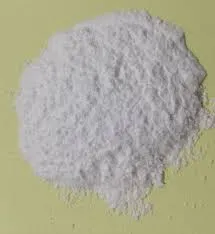- Afrikaans
- Albanian
- Amharic
- Arabic
- Armenian
- Azerbaijani
- Basque
- Belarusian
- Bengali
- Bosnian
- Bulgarian
- Catalan
- Cebuano
- Corsican
- Croatian
- Czech
- Danish
- Dutch
- English
- Esperanto
- Estonian
- Finnish
- French
- Frisian
- Galician
- Georgian
- German
- Greek
- Gujarati
- Haitian Creole
- hausa
- hawaiian
- Hebrew
- Hindi
- Miao
- Hungarian
- Icelandic
- igbo
- Indonesian
- irish
- Italian
- Japanese
- Javanese
- Kannada
- kazakh
- Khmer
- Rwandese
- Korean
- Kurdish
- Kyrgyz
- Lao
- Latin
- Latvian
- Lithuanian
- Luxembourgish
- Macedonian
- Malgashi
- Malay
- Malayalam
- Maltese
- Maori
- Marathi
- Mongolian
- Myanmar
- Nepali
- Norwegian
- Norwegian
- Occitan
- Pashto
- Persian
- Polish
- Portuguese
- Punjabi
- Romanian
- Russian
- Samoan
- Scottish Gaelic
- Serbian
- Sesotho
- Shona
- Sindhi
- Sinhala
- Slovak
- Slovenian
- Somali
- Spanish
- Sundanese
- Swahili
- Swedish
- Tagalog
- Tajik
- Tamil
- Tatar
- Telugu
- Thai
- Turkish
- Turkmen
- Ukrainian
- Urdu
- Uighur
- Uzbek
- Vietnamese
- Welsh
- Bantu
- Yiddish
- Yoruba
- Zulu
Nov . 23, 2024 04:40 Back to list
minocycline hyclate
Minocycline Hyclate An Overview of Its Uses, Mechanism, and Benefits
Minocycline hyclate is a semi-synthetic derivative of tetracycline, a broad-spectrum antibiotic. This medication is commonly used to treat a variety of bacterial infections and has gained popularity for its efficacy in treating conditions such as acne, respiratory tract infections, and skin infections. Understanding the properties, mechanisms, and potential benefits of minocycline hyclate can help patients and healthcare providers make informed decisions regarding its use.
Mechanism of Action
The effectiveness of minocycline hyclate stems primarily from its ability to inhibit bacterial protein synthesis. It binds to the 30S ribosomal subunit, preventing the attachment of aminoacyl-tRNA to the mRNA-ribosome complex. This interruption halts protein production, which is vital for bacterial growth and reproduction. As a result, minocycline exhibits bacteriostatic activity, meaning it effectively halts the spread of bacteria rather than directly killing them.
Minocycline is effective against a wide range of gram-positive and gram-negative bacteria, including Staphylococcus aureus and Streptococcus pneumoniae. Its efficacy extends to resistant strains, such as methicillin-resistant Staphylococcus aureus (MRSA), making it a valuable option in the era of increasing antibiotic resistance.
Clinical Uses
Minocycline hyclate is used in treating various infections, especially those related to the skin and respiratory system. One of the most common applications is in the treatment of acne vulgaris. It helps reduce inflammatory lesions and promotes the healing of existing acne by targeting the bacteria Propionibacterium acnes, which is involved in the pathogenesis of acne.
Moreover, minocycline has been employed in the treatment of certain chronic conditions, such as rheumatoid arthritis, for its anti-inflammatory properties. Studies have suggested that it may slow the progression of the disease and improve patient outcomes by modulating the immune response.
In addition to these uses, minocycline hyclate has shown promise in treating conditions like periodontitis, where it can be administered as a localized therapy in conjunction with dental procedures. Its anti-inflammatory effects can aid in reducing gum inflammation and promoting oral health.
minocycline hyclate

Benefits and Considerations
Besides its antimicrobial properties, minocycline hyclate offers several additional benefits. Its ability to penetrate tissues allows for effective treatment of infections that occur deep within the body, such as in cases of osteomyelitis. Furthermore, its long half-life means that patients can often take it less frequently than some other antibiotics, thereby improving adherence to the treatment regimen.
However, like all medications, minocycline hyclate comes with potential side effects. Common adverse effects include dizziness, vertigo, nausea, and skin hyperpigmentation. Particularly concerning is the risk of developing antibiotic resistance, which underscores the importance of using this medication judiciously. Patients are advised to complete the full course of therapy as prescribed and to avoid sharing antibiotics with others.
Future Perspectives
Ongoing research into minocycline and its potential applications continues to expand our understanding of its therapeutic benefits. Investigations into its neuroprotective effects have revealed potential for treating neurodegenerative diseases, such as multiple sclerosis and Alzheimer’s disease. Its ability to modulate inflammation and cellular apoptosis could pave the way for innovative treatments in fields beyond infectious diseases.
Conclusion
Minocycline hyclate is a versatile and effective antibiotic with a range of clinical applications, notably in the treatment of acne, bacterial infections, and inflammatory diseases. Its unique mechanism of action, along with a favorable pharmacokinetic profile, makes it a valuable tool in modern medicine. However, prudent use is essential to mitigate side effects and reduce the likelihood of developing antibiotic resistance. With ongoing research, minocycline hyclate may find new therapeutic roles, further solidifying its importance in the pharmacological landscape.
In summary, understanding minocycline hyclate's properties and applications can empower both patients and healthcare providers in their respective roles in promoting effective and safe treatment strategies.
-
Guide to Oxytetracycline Injection
NewsMar.27,2025
-
Guide to Colistin Sulphate
NewsMar.27,2025
-
Gentamicin Sulfate: Uses, Price, And Key Information
NewsMar.27,2025
-
Enrofloxacin Injection: Uses, Price, And Supplier Information
NewsMar.27,2025
-
Dexamethasone Sodium Phosphate Injection: Uses, Price, And Key Information
NewsMar.27,2025
-
Albendazole Tablet: Uses, Dosage, Cost, And Key Information
NewsMar.27,2025













